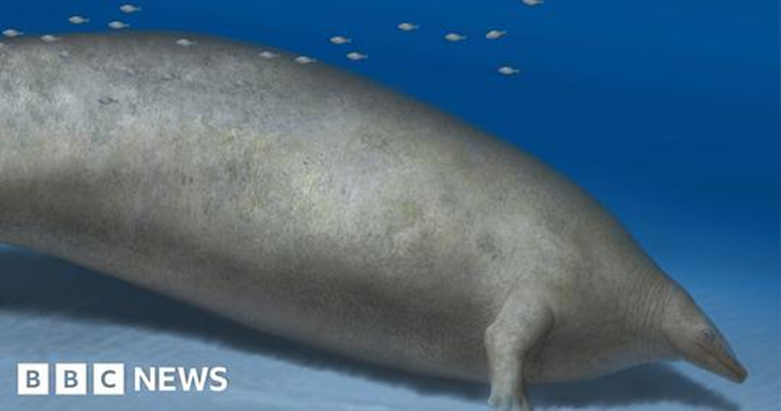Scientists find a fossil of a giant animal in Peru

pexels - expressive image of some fossils
Scientists have discovered fossils in Peru of a giant "Perocetus" whale that lived about 38 to 40 million years ago during the predawn era (Eocene). It has long been the largest animal recorded in history.
According to (bbc) website, Dr. Eli Amson, one of the researchers, said: "The fossils were actually discovered 13 years ago, but their size and shape mean that it took only three years to transport them to Lima (the capital of Peru), where they have been studied since then." The discovery team was led by paleontologist Dr. Mario Urbina. It took a huge effort to extract the bones from the solid rock of the desert.
18 marine mammal bones have been recovered - an early type of whale known as a basilosaurid. These included 13 vertebrae, four ribs and part of the hip bone.
But even by looking at these fragmentary items and their age, scientists were still able to decipher a great deal about the creature.
The weight of the whale is estimated at 340 tons

In particular, the bones were apparently very dense, due to a process known as sclerosis, in which the internal cavities are filled. The bones were also large in size, meaning they had extra growths on their outer surfaces - something called pachyostosis. Researchers estimated that Berossetes whale was 20 meters long and weighed up to 340 tons, a mass that exceeds that of any other known animal, including the modern and largest blue whale. Dinosaurs, the scientific name Perocetes means "giant Peruvian whale".
"The main feature of this animal is certainly its huge weight, which indicates the existence of creatures that have features beyond our imagination," said Giovanni Bianucci, a paleontologist at the University of Pisa in Italy and lead author of the research published in the scientific journal "Nature".

According to Bianucci, it is larger than the dinosaurs, and the smallest size estimate for Berocets is 85 tons, and the average is 180. The largest known blue whale weighed about 190 tons, despite being longer than Berocets, as it recorded a length of 33.5 meters.
Studies estimated the weight of the huge Argentinosaurus dinosaur at about 76 tons. It is a long-necked, four-legged, herbivorous dinosaur that lived in Argentina about 95 million years ago, and was classified in a study published in May as the largest dinosaur ever.
The found part of the skeleton of Perusets was extracted from the desert on the coast of southern Peru, an area rich in whale fossils, and the skeleton included 13 vertebrae, four ribs and a bone from the pelvis.

The very large bones were very dense and intact. This feature is not found in cetaceans, which include whales, dolphins, and porpoises, but it is present in Sirenians, another group of aquatic organisms that includes manatees and dugongs.
Only the skeletal mass of the Berossetes whale has been estimated to be between five and eight tons, which is at least twice as large as that of the blue whale.
The researchers suspect that Pyrrhocets lived like sirenians, meaning that it was not an active predator, but rather an animal feeding near the bottom of shallow coastal waters.
The giant whale is a herbivore

Olivier Lambert, a paleontologist at the Royal Belgian Institute of Natural Sciences in Brussels, said: "Because of its heavy skeleton and, for the most part, its very large body, this animal was emphatically slow swimmer and this seems to me, at this stage of our knowledge and awareness, to be a kind of peaceful giants. A little big manatee. It must have been an imposing animal, but maybe it wasn't so scary."
"It may have been herbivorous like cetaceans, but that would be the only case among cetaceans," Bianucci said. "Maybe it fed on molluscs and crustaceans on sandy bottoms like the modern gray whale, or perhaps it fed on vertebrate carcasses, like some of the great sharks today."
Skeletal features indicate that Berosytes is related to Basilosaurus, another prehistoric whale that was similar in length but smaller than it, but Basilosaurus was an active predator with a lighter body, powerful jaw and huge teeth.
Source: websites

